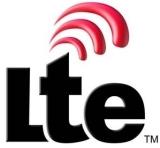 Behold, 4G is coming soon. As 3G services are on the verge of start, operators are already chalking out plans for deploying 4G here in India.
Behold, 4G is coming soon. As 3G services are on the verge of start, operators are already chalking out plans for deploying 4G here in India.
As you might know Verizon in USA and Vodafone D2 in Germany have successfully launched 4G services, many operators around the world are ready to follow soon. The following post briefs about Long Term Evolution (LTE) – System Architecture Evolution (SAE), a 4G technology.
While 3G was revolution, 4G is evolution. The main aim of 4G technology was to enable users with high speed mobile internet access, thus enabling several other features. Also other aim was to converge all the existing networks into one network.
It’s truly a technological evolution. While 3G was more of an extension to 2G, 4G is entirely new. The entire mobile network architecture was redesigned so as to achieve always on high speed connectivity and also enable operators with various mobile networks to converge into one network.
There are two parts to this evolution. LTE – This is mainly an air interface evolution. Technologies like OFDMA, 64 QAM and MIMO were used for LTE over air interface making it possible to squeeze a lot of data in limited frequency. All technological evolutions of LTE are being tracked by 3GPP as part of Release 8.
Other part of the network is the core network which is referred to as SAE. The core network also has been modified from a 3G network, so as to cope with fast air interface. Major change in core network is the flat all IP network. Also SAE is designed in such a way to accommodate other networks like CDMA, WiFI and Wimax. This means a mobile from CDMA, wifi or wimax network can smoothly roam into a SAE network. This was a huge advantage of LTE SAE over other 4G technologies. The flat IP architecture has reduced the number of nodes in the network making it easy for the maintenance.
LTE-SAE is truly a remarkable achievement, but it has its own caveats. The biggest problem with LTE is that there is no traditional voice call support. This means you simply cannot dial a number. All the calls are supposed to be VOIP calls. Several solutions like, CS Fallback, VOLGA, IMS, are proposed to support voice over LTE but operators are still not convinced with any of the solutions. For now the LTE deployments are mainly aimed at providing high speed internet access.















